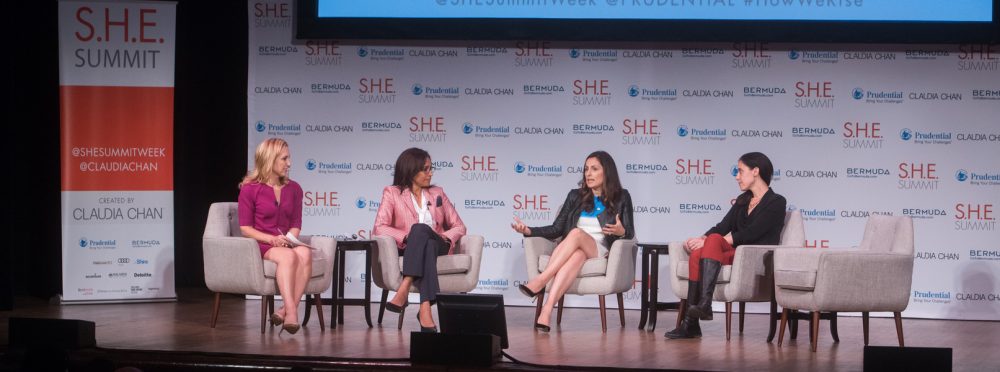Process, the unsung hero in company transformation
Next week I will be moderating a conversation with Joanne Lipman, luminary of the publishing
industry and author of, That’s What She Said. And Jonathan Sposato, entrepreneur, investor
and author of Better Together. As we prepared for SHE Summit, I was asked an interesting
question, “Politics, Policy, Process -what have you found to be most effective in leading
change?
My response? 5% Politics, 20% Policy and 80% Process.
If the question had been asked in a more open-ended way, my answer would have been an
immediate and unmitigated, culture. Culture is a company’s most leverageable asset to effect
change at an accelerated rate.
Arguably, politics are an external factor that affect a company’s culture. Policy offers the
guardrails for acceptability within an organization, often informed or required by the legislation
that politics produces. While legislation may be necessary, it takes too long. Why would
companies wait to realize the proven benefits of diversity?
Both politics and policy exist within a compliance paradigm. And if compliance is the dominant
intent, you may stay out of trouble (maybe), but you will never be a great company.
This is where culture comes in, it transcends politics and policy to unleash the potential of every
aspect of the company. As Jon Katzenbach writes, “you want to move from rational compliance
to emotional commitment.” This is what a carefully curated culture does, it engages people at
a deep level and points them all in the same direction.
Process, and the operating system within which it lives, is the most overlooked aspect of
corporate culture. In fact, most of the time it’s not thought of at all, especially in creative
environments. Companies will spend weeks, months, even years contemplating their Purpose,
Mission, Vision, Values etc. They’ll invest millions in beautiful, eco-friendly and purposeful
workplaces designed for interaction and then do nothing to design HOW the work is done.
HOW the work is done is the defining feature of an employee’s relationship with company. It
the biggest contributor to how people feel and how people feel, at scale, is the company’s
culture. They may be able to parrot back your values in a survey, but it’s their emotional state
that makes the culture real. So, designing processes that support the peak states of high-
performing teams is best lever to pull to create accelerated change. I look forward to discussing
this and more with Joanne and Jonathan next week.
The Why Behind S.H.E. Summit 2018’s Agenda
It takes more than a year to plan and prep a two-day conference — this was one of the lessons from the first S.H.E. Summit back in 2012. For twelve full months, my team and I sit down with creatives, entrepreneurs, corporate leaders, social changemakers, and we talk about the realities underlining their careers. I dig in to learn as much as possible about what ignites their passion and the kind of gaps they’re driven to fill. These are the conversations that will lead to change and morph our 2-day New York summit agenda.
For 2018 it was important to honor the priorities revealed in those conversations by including more inspiring corporate change agent voices, while not compromising the agenda. What makes S.H.E. Summit so special is that it speaks to anyone who wants to be a leader in their space. Everyone subscribes to the same mission if they’re in those seats — they want to build their legacy by way of strengthening their leadership.
Below I’ve listed out the five-point list I use to build out the S.H.E. Summit agenda. While checking off each item, I focus on a single question — there are 7.3 billion people in the world, how do we ensure that every single person at S.H.E. Summit understands that their impact is both unique and valuable?
Does the programming remind attendees of their agency?
Our goal with every session and on-site activation is to ensure that everyone sitting at the 92nd Street Y understands that their ability to affect change isn’t checked at the door when they walk into work. Instead, we are driven to host an event that facilitates opportunities for networking and conversations that helps them realize that they play a powerful role in their industries ability to move the needle forward.
Are we elevating topics that attendees may not be able to have anywhere else?
S.H.E. Summit is a safe space for entrepreneurs and corporate employees. We create an environment where all attendees can bring their passions and their pain points. Our intention is that the conference programming will speak to each of those. We keep relationships and communications across industries open to make sure we are tuned in to what is relevant in order to be able to weave the threads into the agenda. Whether we’re talking about caregiving or financial empowerment, we aim for conversations that are vulnerable, actionable, and empowering. Like my friend, Susan Schmitz at Dell says, “We can’t fix what we can’t talk about.”
Are we exposing the corporate space to non-corporate thinking?
The S.H.E. Summit stage convenes humanitarians, celebrities, entrepreneurs, and corporate leaders. Having a high percentage of corporate employees in the S.H.E. Summit audience means that over two days we have the opportunity to expose the corporate space to non-corporate thinking. As we map out the agenda we build with the intention of hosting conversations that will help activate and inspire corporate employees to become corporate changemakers.
Are we setting a foundation for larger conversations?
S.H.E. GLOBL is the S.H.E. Summit parent company. S.H.E. GLOBL is the force driving the production of the conference. It’s how we consult year-round to ensure that the conversations that are started at the S.H.E. Summit annual conference are continued and built on. Regardless of how corporate employees choose to build on what they learn, we ensure that over two days that the individuals and teams present have at their disposal a robust toolbox of inspiring ideas and actionable tactics for driving change within themselves, their companies, and communities.
The value of attending S.H.E. Summit is anchored in the value we provide through the agenda. It’s how we help employees feel seen and heard so that they can tap into their agency to spark larger change. Companies sending delegations to the conference know that our mission — our real value is in helping to provide talent with the inspiration that will ultimately support their retention and engagement efforts. S.H.E. Summit is providing the reflection and recharge that we all need to be the change that we want to see.



